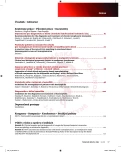A practical view of the role of HLA matching in unrelated donor haematopoietic stem cell transplantation
Authors:
P. Jindra
Authors‘ workplace:
Hematologicko-onkologické oddělení FN Plzeň
Published in:
Transfuze Hematol. dnes,19, 2013, No. 2, p. 70-75.
Category:
Comprehensive Reports, Original Papers, Case Reports
Overview
The therapeutic effect of unrelated donor stem cell transplantation (SCT) is predominantly determined by genetic non-identity – HLA-mismatch – between recipient and donor. This facilitates both the desirable graft versus leukaemia (GVL) effect, which reduces the risk of relapse in malignancies as well as the graft-versus-host disease (GVHD), which increases mortality. This paper attempts to summarize the current view on the overall significance of HLA match and to interpret the qualitative and quantitative effect of mismatches in individual HLA genes on the outcome of SCT from an unrelated adult donor, particularly in malignant diseases. The current standard involves an effort to find an allele-level matched donor at least in HLA-A,-B,-C,-DRB1, because isolated mismatch in each of these genes increases mortality by approximately 10% and multiple mismatches actually have a negative synergistic effect. However, the consequences of incompatibility are significantly influenced by disease stage, as in high-risk patients these are much less significant or even negligible because of the accentuated GVL response. With the possible exception of the HLA-C locus, mismatches either on allelic or antigenic level seem to be comparably tolerated in peripheral blood stem cell transplantation. If it is necessary to accept a mismatched donor, then in the case of bone marrow it is best to avoid mismatches in HLA-A and DRB1, while in the case of peripheral blood stem cells the worst tolerated “antigenic” mismatch involves HLA-C. Apart from HLA match, there are many factors on the donor side that affect SCT outcome. These especially include timely transplantation, as the speed of finding an unrelated donor and SCT within the shortest possible time are almost as important as the degree of HLA-compatibility.
Key words:
HLA, transplantation, haematopoietic stem cells, unrelated
Sources
1. Thomas E, Storb R, Clift RA, et al. Bone-marrow transplantation (first of two parts). N Engl J Med 1975; 292(16): 832-843.
2. Bray RA, Hurley CK, Kamani NR, et al. National marrow donor program HLA matching guidelines for unrelated adult donor hematopoietic cell transplants. Biol Blood Marrow Transplant 2008; 14(9 Suppl): 45-53.
3. Nunes E, Heslop H, Fernandez-Vina M, et al. Definitions of histocompatibility typing terms. Blood 2011; 118(23): e180-e183.
4. Xiao Y, Lazaro AM, Masaberg C, et al. Evaluating the potential impact of mismatches outside the antigen recognition site in unrelated hematopoietic stem cell transplantation: HLA-DRB1_1454 and DRB1_140101. Tissue Antigens 2009; 73(6): 595-598.
5. Warren EH, Zhang XC, Li S, et al. Effect of MHC and non-MHC donor/recipient genetic disparity on the outcome of allogeneic HCT. Blood 2011; 120(14): 2796-2806.
6. Morishima Y, Sasazuki T, Inoki H, et al. The clinical significance of human leukocyte antigen (HLA) allele compatibility in patients receiving a marrow transplant from serologically HLA-A, HLA-B, and HLA-DR matched unrelated donors. Blood 2002; 99(11): 4200-4206.
7. Petersdorf EW, Gooley TA, Anasetti C, et al. Optimizing outcome after unrelated marrow transplantation by comprehensive matching of HLA class I and II alleles in the donor and recipient. Blood 1998; 92(10): 3515-3520.
8. Petersdorf EW, Gooley T, Malkki M, et al. The biological significance of HLA-DP gene variation in haematopoietic cell transplantation. Br J Haematol 2001; 112(4): 988-994.
9. Petersdorf EW, Anasetti C, Martin PJ, et al. Limits of HLA mismatching in unrelated hematopoietic cell transplantation. Blood 2004; 104(9): 2976-2980.
10. Petersdorf EW, Gooley T, Malkki M, et al. Clinical significance of donor-recipient HLA matching on survival after myeloablative hematopoietic cell transplantation from unrelated donors. Tissue Antigens 2007; 69(S1): 25-30.
11. Lee SJ, Klein J, Haagenson M, et al. High resolution donor-recipient HLA matching contributes to the success of unrelated donor marrow transplantation. Blood 2007; 110(13): 4576-4583.
12. Woolfrey A, Klein JP, Haagenson M, et al. HLA-C antigen mismatch is associated with worse outcome in unrelated donor peripheral blood stem cell transplantation. Biol Blood Marrow Transplant 2011; 17(6): 885-892.
13. Baxter-Lowe LA, Maiers M, Spellman SR, et al. HLA-A disparities illustrate challenges for rating the impact of HLA mismatches on bone marrow transplant outcomes in the United States. Biol Blood Marrow Transplant 2009; 15(8): 971-981.
14. Oudshoorn M, van Walraven SM, Bakker JNA, et al. Hematopoietic stem cell donor selection: The Europdonor experience. Hum Immunol 2006; 67: 405-412.
15. Spellman SR, Eapen M, Logan BR, et al. A perspective on the selection of unrelated donors and cord blood units for transplantation. Blood 2012; 120(2): 259-265.
Labels
Haematology Internal medicine Clinical oncologyArticle was published in
Transfusion and Haematology Today

2013 Issue 2
Most read in this issue
- A practical view of the role of HLA matching in unrelated donor haematopoietic stem cell transplantation
- Separation of whole blood and gravity-based manufacturing of blood components by the disable set ErySet® with a hollow-fibre filter
- Recommendations for the diagnosis and treatment of chronic lymphocytic leukaemia
- Clinical and biological prognostic factors in malignant lymphomas
